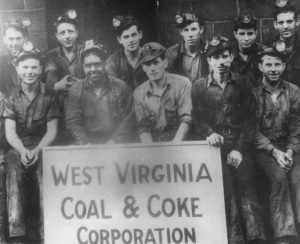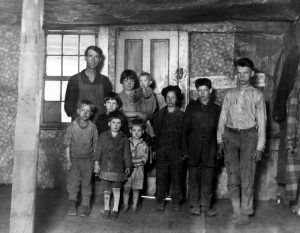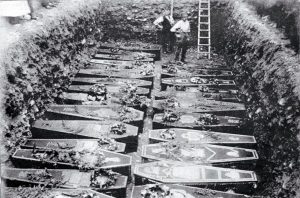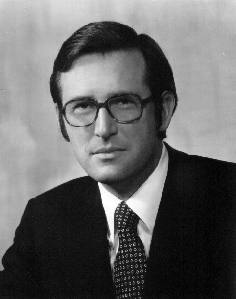Joe Manchin III, Democratic Senator from West Virginia, has perhaps become the most influential Senator in the nation. It is he and his belief in negotiation, compromise, bipartisanship and the continuation of the filibuster that may stand in the way of the Biden Administration’s American Rescue Plan, a multitrillion dollar investment in the nation’s well-being and its infrastructure as well as the Democratic Party’s attempt to strengthen existing Voting Rights legislation.
A former Governor of West Virginia, Manchin won re-election even as West Virginia gave more votes per capita to Donald Trump than any other State in the nation. Is he playing a very careful political game to remain in office or is he sincerely acting in the public interest?
One has to know something about West Virginia to figure it out.
WEST VIRGINIA
Actually, West (By God) Virginia …as it is called by proud residents with affection because when you live there you know that’s how West Virginians feel about their State.
And live there we did coming from a life and education in Brooklyn to go to the soft coal capital of the USA…Logan County, West Virginia…to pursue a career in broadcasting.
Unlike a very brief first stop in a tiny town in Louisiana where one saw the entire reality of the South in just five months… the good and the bad at least from a New Yorkers point of view…West Virginia was an entirely different and revealing experience.
But not this West Virginia. Not Joe Manchin’s West Virginia.
Today’s West Virginia is poor by national standards, weak in education and healthcare and the national standard of living…45th among States in the nation.
 But the West Virginia we entered was poverty-stricken. Its people lived a hardscrabble hillbilly-coal miner life in the late 1950s and 60’s. The nation knew West Virginia and Eastern Kentucky as Appalachia – which meant more than a location…it meant an unending poverty, an economy dominated by coal fields in a slowly dying coal industry and running moonshine, terrible road transportation throughout the State, little corporate interest but for those big organizations in the coal and energy industry. It was a difficult life for most with little to recommend it. In the words of the George Gershwin classic, they had plenty of nothin’.
But the West Virginia we entered was poverty-stricken. Its people lived a hardscrabble hillbilly-coal miner life in the late 1950s and 60’s. The nation knew West Virginia and Eastern Kentucky as Appalachia – which meant more than a location…it meant an unending poverty, an economy dominated by coal fields in a slowly dying coal industry and running moonshine, terrible road transportation throughout the State, little corporate interest but for those big organizations in the coal and energy industry. It was a difficult life for most with little to recommend it. In the words of the George Gershwin classic, they had plenty of nothin’.
The poverty in Appalachia was a national story and would become a focus in the 1960 Democratic primary for President.
Its chief public claim to fame, as we endured our four hour, nausea-inducing, horrific, winding bus ride over the mountains from Charleston to Logan, was the unqualified success of West Virginia University’s basketball team in Morgantown and the State’s star player, Jerry West. Boy could he play and did his team play.
But what West Virginia really had, completely hidden by those coal-filled mountains, was its people…as true and real as anyone in the country.
DOWNHILL
During WWII Logan prospered as never before – and never again.
Coal miners walked through town with handfuls of cash…retail blossomed…new homes were built. Coal mattered bigtime and Logan produced more soft coal for the War effort than any other region in the nation.
The great union wars in the industry were over. John L. Lewis, head of the Mine Workers union was a king and the massive coal mining companies were his adversaries. He had fought a real fight, with lives lost, and had won.
Then, 500,000 West Virginians were coal miners. But only 20 years later when we arrived, there were only 250,000. Today less than 50,000 coal miners exist as coal no longer matters in this World we live in.
 Then and now West Virginia was Baptist country in what seemed to be the true picture of America: sincerely Christian, hard-working, caring about each other as those living “in the same boat” tend to do…with family values that were genuine. They understood what it was like to live a hard life in the Mountain State with very little to offer beyond what they worked so hard for. They did the best they could. If there were ten children in a family and only two pair of shoes, two of those children would go to school…and they rotated those shoes accordingly…those kids would get some schooling, somehow.
Then and now West Virginia was Baptist country in what seemed to be the true picture of America: sincerely Christian, hard-working, caring about each other as those living “in the same boat” tend to do…with family values that were genuine. They understood what it was like to live a hard life in the Mountain State with very little to offer beyond what they worked so hard for. They did the best they could. If there were ten children in a family and only two pair of shoes, two of those children would go to school…and they rotated those shoes accordingly…those kids would get some schooling, somehow.
If there was a shortage of food, the kids ate first.
What the outside World knew of them or thought about them didn’t matter.
They believed in themselves, each other, their country …and God.
INSIGHT
One cold, raw December morning in the first West Virginia Winter we would know…with light snow falling and sticking… disaster struck. There was only one kind of disaster most people in Logan feared and it happened: a collapse in Island Creek Mine #17 – with 18 men trapped beneath a section deep into that mine.
 The mine was less than two miles from the center of Logan. Despite our unfamiliarity with any of this, we were sent to find out what happened. We would broadcast events from a telephone booth standing all by itself about 250 yards from the mine entrance. The efforts at rescue had begun even as we dialed the old rotary dial, a pocketful of change at the ready.18 men trapped. The story would become national and reporters from the new services and all over the State would appear in just a day or two.
The mine was less than two miles from the center of Logan. Despite our unfamiliarity with any of this, we were sent to find out what happened. We would broadcast events from a telephone booth standing all by itself about 250 yards from the mine entrance. The efforts at rescue had begun even as we dialed the old rotary dial, a pocketful of change at the ready.18 men trapped. The story would become national and reporters from the new services and all over the State would appear in just a day or two.
Island Creek, then a massive player in the coal industry, stepped quickly away from any suggestion of irregularities, shortcuts, blame.
No one in Logan believed them. They had a history. Most of the giants in the industry did.
The families would come for hours and then leave…their eyes downturned, dimming along with hope.
It took almost a week to find the miners. There were no survivors. After a week the mine was reopened and the men went back to work.
No reason for the disaster was ever reported. Just a sudden explosion, gas, darkness and death.
Soon the pall over Logan disappeared. Disasters like this happened…not often but even one was enough. It was part of the normal life of miners and their families.
Even then the mining of coal was changing. Rather than deep mining the coal companies began to lop off the top of mountains containing coal: strip mining had begun. It was cheaper, miners were laid off labor costs were reduced…coal could be found in abundance. What the coal companies did was to drop the dregs of their mining into piles below the stripped mines…piles of slag often as high as small mountains. Sometimes the slag piles would rupture sending tons of waste along a river valley destroying everything in its path.
The coal industry was unstoppable. They owned the company homes miners lived in; owned the shops and stores they bought everything in, in a sense owned the men themselves.
But this had been the way for generations.
This was West (By God) Virginia.
THE CHANGE

While Nelson and David Rockefeller held sway in New York and nationally, brother Winthrop went to Arkansas to become Governor and brother John (Jay) went to West Virginia where he would become Governor and then Senator. Both did much to modernize those States.
In Jay’s case, he built the roads that made West Virginia a place to develop commerce beyond mining for the very first time.
Today energy is still key but most of it is in natural gas with only some indication of deep mining coal. Every major Petrochemical company is stationed in West Virginia. They are in aerospace, biotech and automotive.
West Virginia is no longer a sad piece of Appalachia, of Americana, it has become a decent place to live and work with Morgantown considered one of the ten best small towns to live in.
But this is also true: it ranks 45th among the States in such services as education (less than 10% of its residents have a college degree), healthcare, welfare and personal wealth.
The values of its people remain the same – all of the values. It is very white and Christian with a large number of evangelicals, has elected a series of essentially centrist Governors who have built on what Jay Rockefeller started.

He survived the complete change in what had been a Democratic West Virginia as its people overwhelmingly supported Donald Trump in 2016 and again last year. He has been known as thoughtful moderate, careful, aware and willing to negotiate legislation when given the chance.
While he had little opportunity during the Trump Administration where there was little bipartisanship or the eight years of the Obama Administration where there was none… he now sits almost alone among Democrats in the Senate in his belief that the Republican response to every piece of legislation will change now in the Biden Administration.
His good friend Paul Begala, a Democratic operative in the Obama years, suggests that Manchin is very sincere, very anxious to help pass legislation in a bipartisan way and that he is not playing a personal political game.
But friendships alter people’s perceptions. Only time will tell whether this one man can make change happen or will quietly stand in its way until the political landscape makes it comfortable for his own future.
Politics is after all —politics.

7/15/2021
What I see sorely missing in American politics today, particularly in the U.S. Congress, is a viable “center” bloc of moderate Republicans and Democratic lawmakers willing to work together to pass viable legislation on a host of issues that will benefit most (if not all) Americans; in other words pass bills to support the national interest. There used to be more of these legislators 20+ years ago. Now there are a lot fewer. It is my hope that Senator Manchin can use his new found power for good and spark more Senators and Representatives to find common ground. We need it now more than ever.
Steve Rolandi
Larchmont, NY